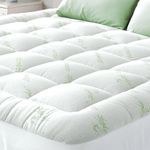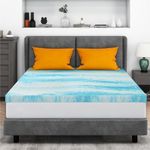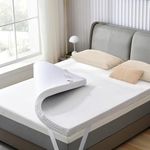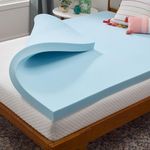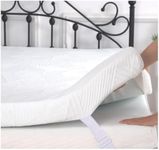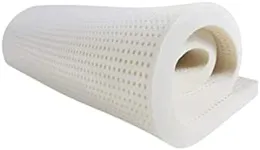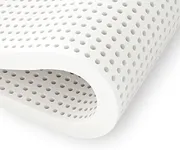Buying Guide for the Best Dorm Mattress Topper
Choosing the right dorm mattress topper can significantly improve your sleep quality, especially if the provided dorm mattress is uncomfortable. A mattress topper adds an extra layer of comfort and support, making your bed more inviting and restful. When selecting a mattress topper, consider your personal sleep preferences and any specific needs you might have, such as back pain or allergies. Here are some key specifications to help you make an informed decision.MaterialThe material of a mattress topper is crucial as it determines the comfort, support, and durability. Common materials include memory foam, latex, and down alternative. Memory foam is known for its contouring support and pressure relief, making it ideal for those with joint pain. Latex is more resilient and offers a bouncier feel, suitable for those who prefer a firmer surface. Down alternative is soft and plush, great for those who like a cloud-like feel or have allergies to natural down. Choose a material that aligns with your comfort preferences and any specific needs.
ThicknessThickness affects the level of comfort and support a mattress topper provides. Toppers typically range from 1 to 4 inches thick. A 1-2 inch topper adds a slight layer of comfort and is good for minor adjustments. A 3-inch topper offers a balance of comfort and support, suitable for most sleepers. A 4-inch topper provides maximum cushioning and is ideal for those who need significant pressure relief or have a very firm mattress. Consider how much extra cushioning you need based on the current state of your dorm mattress and your personal comfort preferences.
DensityDensity, particularly in memory foam toppers, affects the durability and support. It is measured in pounds per cubic foot (PCF). Low-density foam (2-3 PCF) is softer and less durable, suitable for temporary use or lighter individuals. Medium-density foam (3-5 PCF) offers a good balance of comfort and support, ideal for most sleepers. High-density foam (5+ PCF) is very supportive and durable, best for heavier individuals or those needing extra support. Choose a density that matches your body weight and how long you plan to use the topper.
FirmnessFirmness is a measure of how soft or hard a mattress topper feels. It ranges from soft to extra firm. Soft toppers are plush and conforming, ideal for side sleepers or those who prefer a cushioned feel. Medium toppers provide a balance of softness and support, suitable for back sleepers. Firm toppers offer more support and less sinkage, ideal for stomach sleepers or those with back pain. Consider your sleeping position and comfort preference when choosing the firmness level.
Cooling FeaturesCooling features are important if you tend to sleep hot. Some mattress toppers include gel-infused foam, breathable covers, or phase-change materials to help regulate temperature. Gel-infused foam disperses heat, while breathable covers enhance airflow. Phase-change materials absorb and release heat to maintain a stable temperature. If you often wake up feeling hot, look for a topper with these cooling features to ensure a comfortable night's sleep.
Hypoallergenic PropertiesHypoallergenic properties are essential for those with allergies or sensitivities. Some mattress toppers are made from materials that resist dust mites, mold, and other allergens. Look for toppers labeled as hypoallergenic if you have allergies, asthma, or other respiratory issues. This will help create a healthier sleep environment and reduce allergy symptoms.
Cover MaterialThe cover material of a mattress topper can affect its comfort and durability. Common cover materials include cotton, polyester, and bamboo. Cotton covers are soft and breathable, ideal for those who prefer natural materials. Polyester covers are durable and easy to clean, suitable for those looking for low maintenance. Bamboo covers are eco-friendly and moisture-wicking, great for hot sleepers. Choose a cover material that aligns with your comfort preferences and maintenance needs.
